Version of story originally published in print for the Western Carolinian.
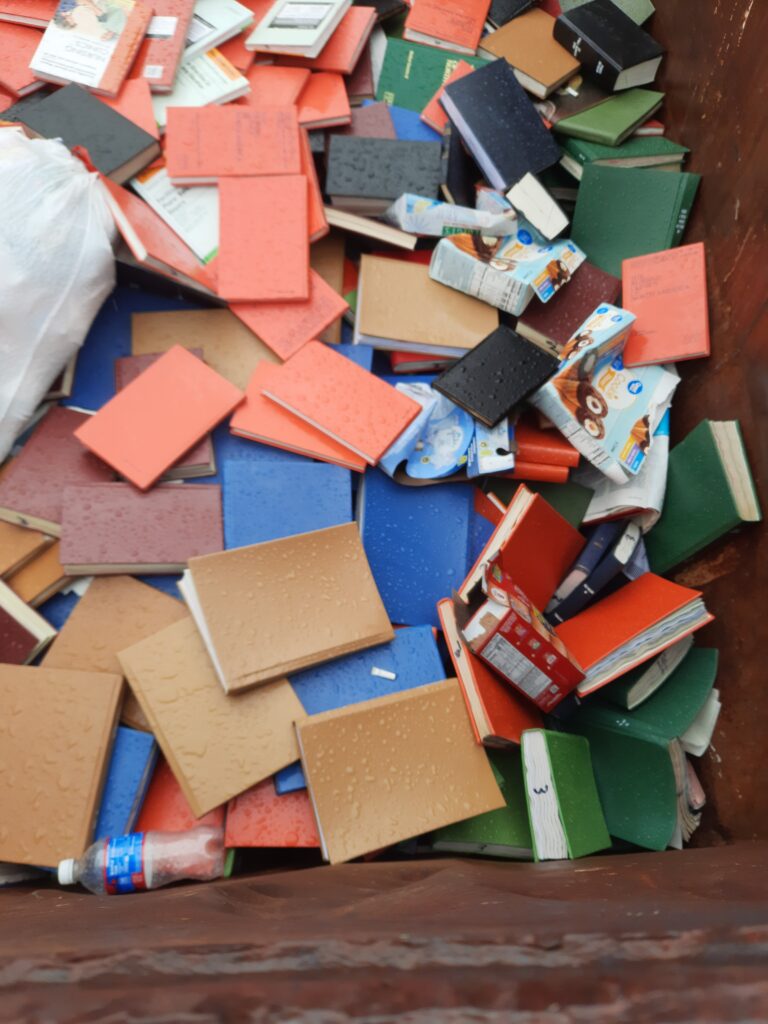
Mold is not an unusual thing and as WCU Faculties manager, Joe Walker says it is a naturally occurring process. For the Hunter Library it was a ten-month clean-up project and over 15.000 bound journals tossed in the big dumpster at the back of the library.
A mold outbreak in the Hunter Library building and up to 15,000 bound journals was first noticed in April 2022 and got worse during the summer. After 10 months, the issue is being resolved with the last of the molded journals being disposed of Feb. 17.
Facilities management was first notified of mold in April 2022. According to Walker, upon first notification of the mold outbreak, Hunter Library, Facilities Management and external collaborators and consultants helped in controlling the mold.
It took 10 months to solve the mold issue on printed materials because of the processes decided on and severity of the mold growth.
Hunter Library was first advised from external mold consultants to physically clean the mold off of printed materials using a solvent and library staff volunteered to do this. This process lasted for three months.
The mold growth increased in the summer and hand cleaning the printed materials was not enough to keep up with it. A different consultant, one that specializes in mold within libraries was requested, but it took several weeks to schedule a consultation.
The consultants solved the mold growth problem before Thanksgiving 2022. Now the Hunter Library is in the final process of discarding bound journals.
“I view this as an opportunity for us to work with others to try and resolve some of the environmental conditions in our aging facility,” said dean of library services, Chuck Thomas.
Mold growth was identified on a few air handler units, supply registers and interior walls of Hunter Library. The mold outbreak in the Hunter Library had a direct cause.
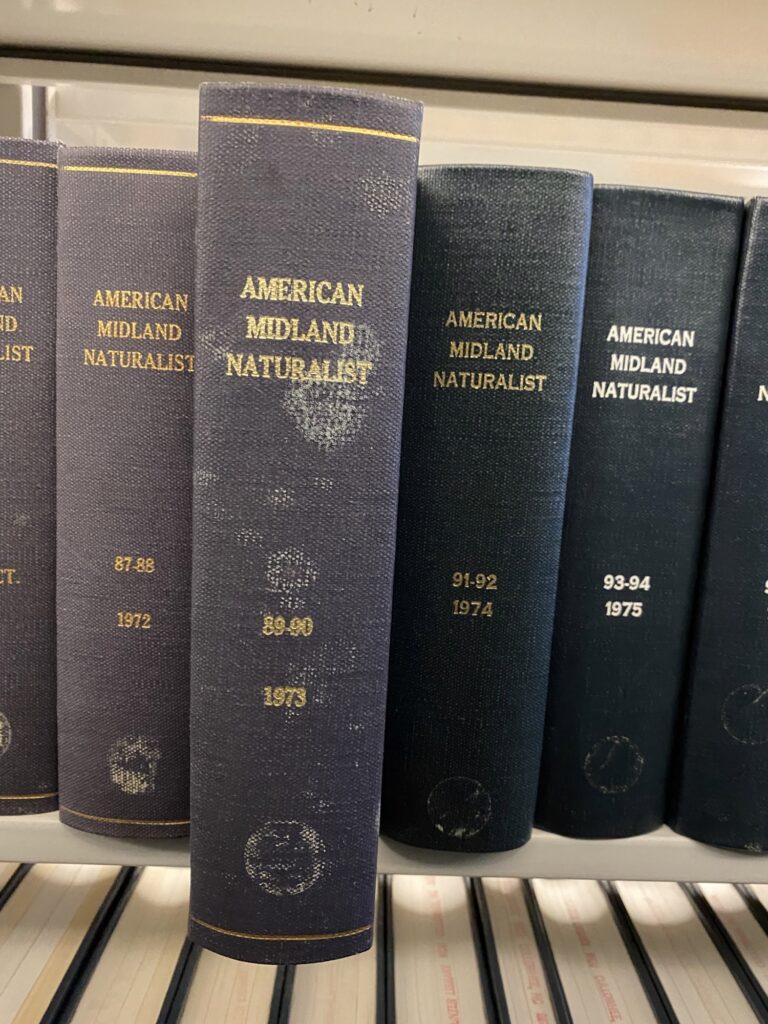
White, circle patches of mold on a book spine. 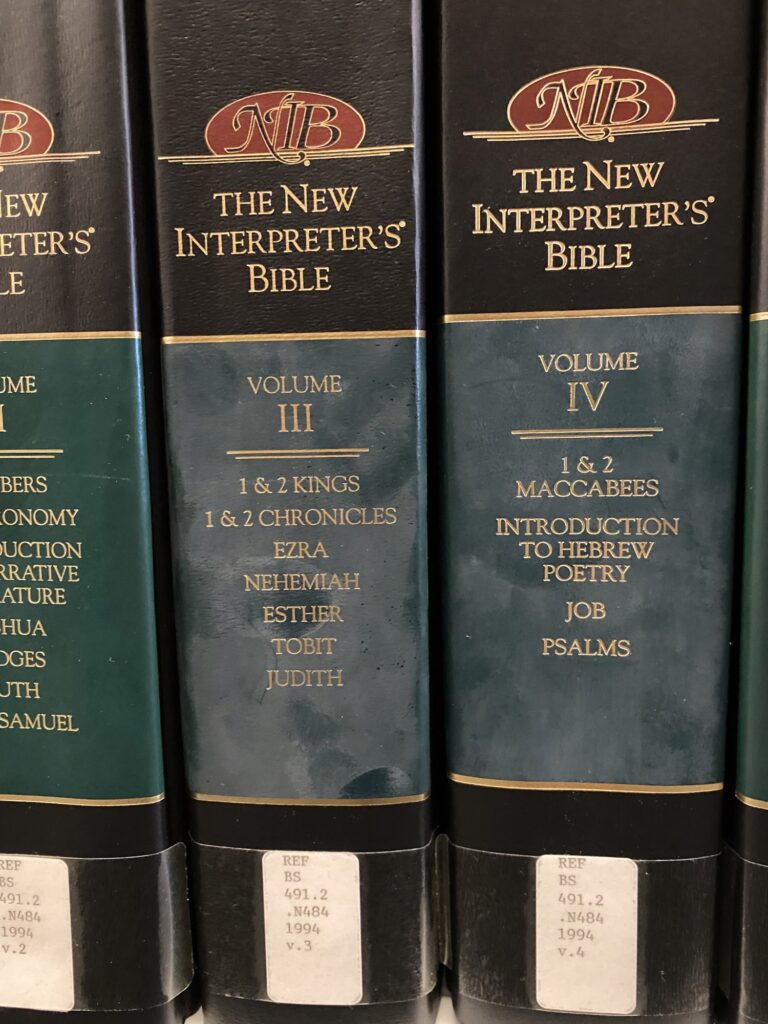
Foggy mold on book spines. 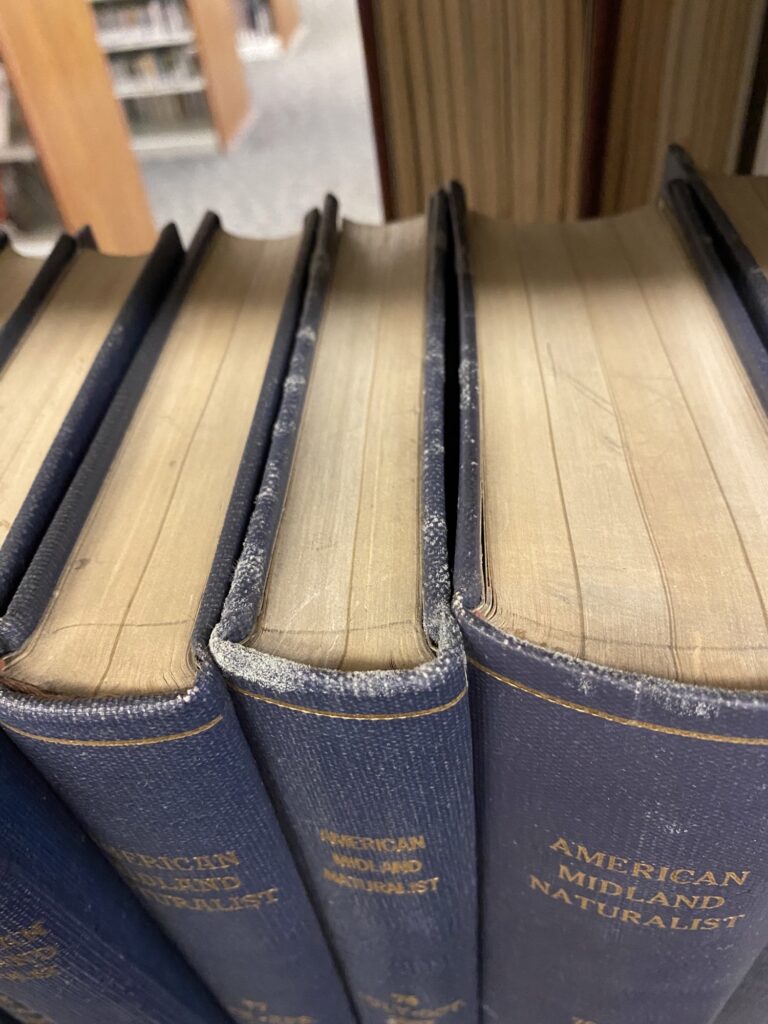
White, powdery mold on top of books. Photos taken by library staff, summer 2022.
According to Walker, the Library’s HVAC system consist of steam reheat coils which controls the humidity of the air inside the building. The replacing of the underground streamline near the library caused steam not to be available for the HVAC system. This increased the humidity levels inside the building and caused mold growth.
Mold spores are a part of the natural environment and always present, but humidity activates mold spores and causes growth.
According to Thomas, he was told by mold consultants that the mold in Hunter Library was not a respiratory hazard. The only danger is if you touch the mold and then touch your face.
The shelves with the molded journals were taped off with barrier tape, so students wouldn’t touch them.
A librarian has seen molded books removed from the shelves near the study areas on the main floor periodically by other librarians and thrown away.
According to Thomas, students were not made aware of the mold issue on printed materials in the library.
Mold grows faster in the summer, so the mold outbreak in Hunter Library was difficult to handle in the summer. Mold is dormant in cooler temperatures, so it was easier to control and maintain.
A specific type of mold was not identified on the printed materials, books and journals. The mold is subtle, looking like white powder on top of pages, a foggy substance on book spines or only visible under ultraviolet light. The infected journals are not available for checkout and if it can’t be restored, it is disposed.
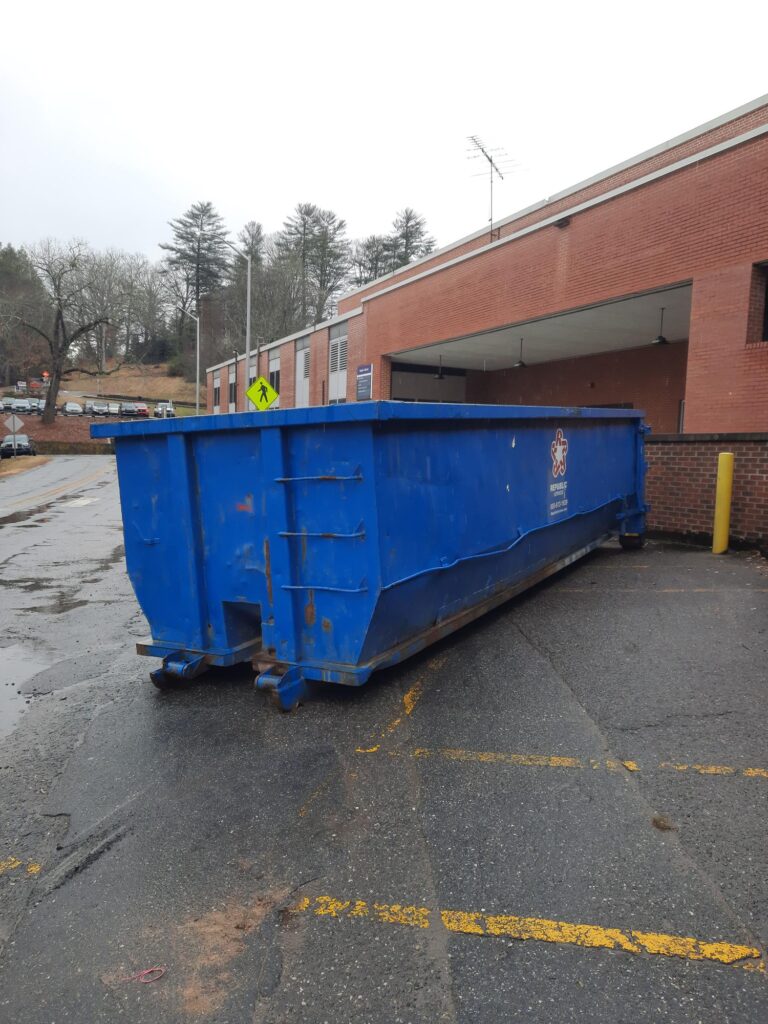
The Hunter Library and Facilities are in the final stages of a six-step process of removing molded materials.
The last of the molded journals are thrown away in the dumpster behind the Hunter Library. No molded books will be present in the library by Feb. 17 when the dumpster is removed.
Once the mold is removed, the next step is maintaining an environment to prevent mold from forming again. Especially in the summer when humidity and temperatures rise, encouraging mold growth.
Data is being reviewed from heat and humidity sensors daily and weekly by one of the library’s department heads.
“Things are really steady, not changing temperature or humidity for the past couple of months, maybe a little longer than that,” said Thomas.
Servpro restoration services helped with remediation, getting the mold levels back to normal, natural levels.
The following are the six steps that were taken when the mold outbreak was first identified.
- The mold was identified and shelf-by-shelf inspections were done to determine how many items have been affected
- Temperature and humidity sensors were installed throughout collections to begin collecting data and identifying both trends and “hot spots” in the library that require more attention
- Volumes were cleaned by hand when necessary.
- Before Thanksgiving, external companies, Lyrasis and Afterdisaster provided consultation, diagnosed and addressed potential causes of the environmental conditions that led to the outbreak
- An evaluation of affected books was done to see which materials are also available in electronic formats (e-journals, e-books, etc.) so it can be discarded if needed without interfering with access of content
- Hunter Library worked with academic faculty and departments and decided which items should be cleaned and repaired, or replaced with a new physical copy, or re-purchased in an electronic format instead of print. This was completed a few weeks ago.
Mold growth is solved in Hunter Library, but not in other buildings on campus.
“No other buildings are being abated for mold,” said Jon Maddy, director of safety/risk management.
A campus building present with mold is TV studio in Center of Applied Technology (CAT) 110F.
“This is the worst it’s ever been,” said Logan Johnson, TV/recording studio student worker.
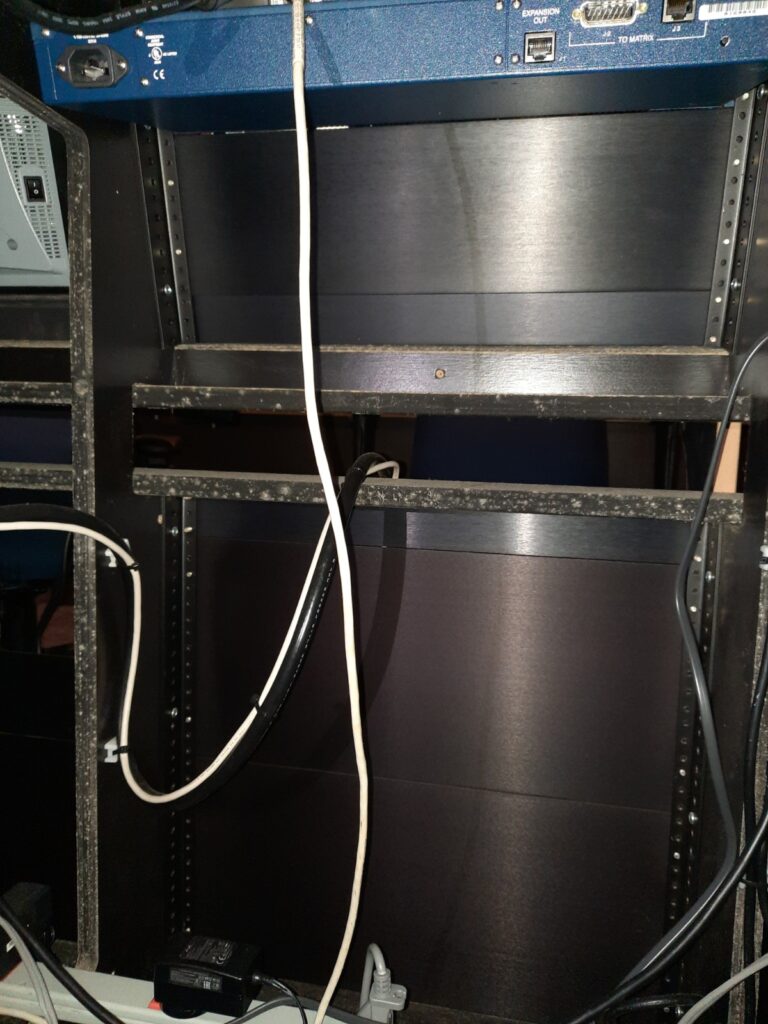
According to Johnson, Facilities Mangement turns off the air in the building in the summer to save power. The result is the building temperature and humidity rising, encouraging mold growth. The computer equipment requires a 60-degree environment.
Mold is present in the wooden structure inside the console of the switcher board. Johnson was told by Facilites Management to clean other mold present with wipes.



